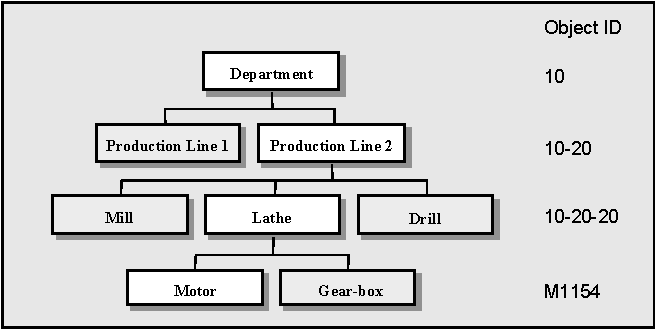Define Serial Objects
Define an object as a serial object if you need to move it to new locations during its lifetime, or want to have a close financial follow-up.
Object Identity
When you create serial objects, you can choose not to enter any object ID. When you then enter a part number with a serial number, the object ID is automatically created by concatenating those two values upon saving the item. In IFS/Application Services, you can select an appropriate separator sign. You can also enter your own object ID for a serial object. However, since serial objects can be moved freely, they should not be given any object identity which uniquely defines their place in the object structure.
Object Structure
If you want to register a serial as a subordinate to an object 10-20-20 (Lathe), it should be given a suitable object number. This identity number, e.g., a motor M1154, indicates a specific motor. The number on the other hand, does not indicate a fixed place in the facility, and the serial object is only temporarily connected to that place in the structure. See the diagram of a four-level structure.

An example of a part of an object structure in four levels.
Objects in Parallel Structures
It is often interesting to know how an object’s failure or an operation stop affects other objects in the equipment structure. A mechanical object structure is created separately from an electrical, or instrumentation structure. Such structures are called parallel structures. Two or more objects located in parallel object structures can be connected individually to allow a direct response. For instance, a switchboard repair affects all connected mechanical objects. In IFS/Equipment you can register a connection between two objects which belong to two otherwise completely independent parallel structures.